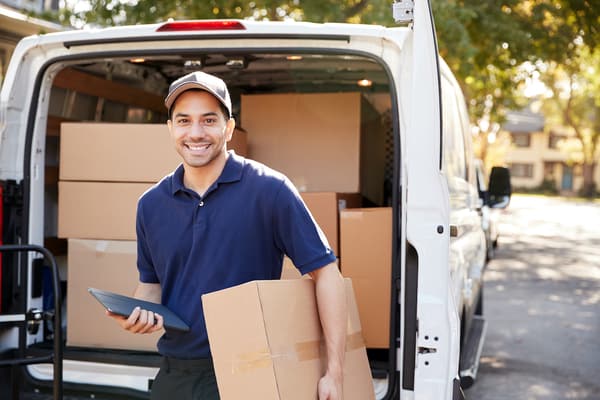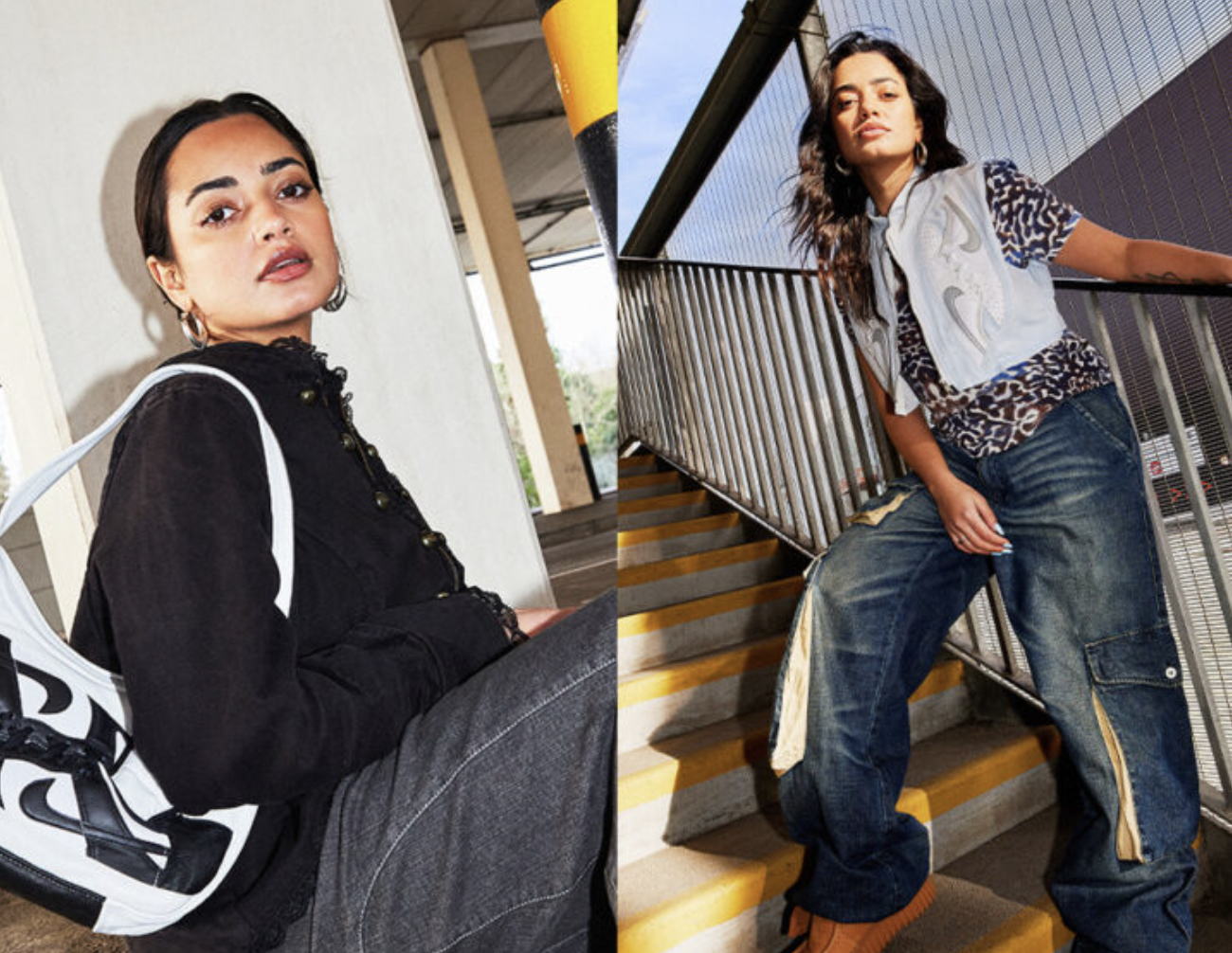Delivery has long been a differentiating factor for shoppers deciding where to buy online. Now, returns and collection are fast becoming just as important. But with the volume of ecommerce orders rising during and since the Covid-19 pandemic, retailers and brands seem to be rethinking some of their promises. Promises of fast and specific delivery and collection are now harder to find, suggesting that retailers have cut back on what they offer, perhaps as shoppers became more accustomed to slower delivery during the pandemic. RetailX research in this Dimension considers more than 20 metrics. The findings are grouped through four questions: what delivery promises do retailers make? Do retailers make it easy to collect online orders in-store? What do retailers promise on returns? Do retailers show stock levels on their websites?
What delivery promises do retailers make?
Standard delivery costs an average of €6.72, €1.13 more than last year, and a median of €5, representing a €1 increase, among the 703 Top1000 retailers assessed on this metric both this year and last. Shoppers must spend an average of €75.10 to get free delivery, and a median of €53.
Retailers now promise delivery in an average of 5.8 days – 0.6 days longer than last year, while the median retailer offers delivery in 5 days, one more than last year among the 897 retailers assessed on the metric both this year and last. Supermarkets offer the fastest delivery, at an average of 4.3 days and a median of 3, followed by specialist grocers (average of 6/ median of 4) and consumer electronics retailers (5.46/4). Marketplaces (9.25/6) and homewares shops (7.23/6) offer the slowest service. Delivery is fastest in Austria (5.17/5), the Netherlands (5.34), Denmark (5.5/5) and Belgium (5.88/4). It’s slowest in Iceland (12.1/8) and Malta (9.9/8).
Same-day delivery
Same-day delivery is less available this year than last. 3% of retailers will now deliver same-day, down 2pp from 5% last year. The service is more available from specialist grocers (10%), DIY and trade tools retailers (9%) and cosmetics retailers (8%). Less than 1% of retailers selling stationery, sports and leisure clothing and equipment, maternity and children’s products, hobby equipment and books now support the service.
Customers are most likely to be able to get items delivered same-day when they order in Switzerland (8%), Portugal (7%), Czechia or Spain (both 6%) – but less than 1% offer the service in Italy, Ireland, Romania, Sweden or Finland. The most significant change was a 7pp fall in the service in Sweden – from 7% – while Poland is the only market to see an increase (+1pp to 4%).
Next-day delivery
More retailers now offer next-day delivery (+1pp to 39%). The service is most available from florists and gift shops (61%), stationers (52%) and cosmetics retailers (51%) and least available from marketplaces (15%) and supermarkets (17%). While retailers in Ireland (+8pp to 50%), the Netherlands (+1pp to 28%) and the UK (+1pp to 44%) increased their use of the service, those selling in Spain (-8pp to 6%), Sweden (-13pp to 13%) and Switzerland (-6pp to 10%) have moved away from offering it in 2022.
Nominated-day and nominated-time delivery
More retailers now enable shoppers to choose a delivery day, with 43% now giving shoppers the choice. That’s up from 4% last year among the 123 retailers assessed on this metric both this year and last. The service is most likely to be available from supermarkets and homeware retailers (both 45%). However, there’s only been a small rise in the proportion of retailers enabling shoppers to name their own delivery time, rising from 4% to 5% of 385 traders assessed on this metric both this year and last.
Do retailers make it easy to collect online orders in-store?
Click and collect was one of the first services to connect online with the store, enabling shoppers to benefit from the convenience of multichannel retailing. It remains a mainstay of connected commerce and the availability, speed and cost of collection can be useful to shoppers if they are in a hurry, or planning ahead.
Cost of standard collection
Collecting an item in-store has become significantly more expensive at some retailers over the last year. Standard collection costs an average of €1.50 from the 40 retailers charging for the service both this year and last. That’s up by 30 cents. But most retailers continue to offer the service for free – in every category. The average service is most expensive from sports and leisure clothing and equipment retailers (€1.49), and cheapest from homeware retailers (60c).
Standard time until item is ready to collect
Shoppers are now able to collect their goods in an average of 64.2 hours – a little over 2.5 days. That represents a sizeable 30 hour improvement since last year. The median time for collection has also improved, by 23 hours, to 48 hours.
The fastest median times to collection are 24 hours, from sports and leisure clothing and equipment stores, and 24.8 hours, from homewares retailers. Brands tend to be slower, enabling pick-up from the store in a median of 72 hours – or five days.
Same-day collection
14% of retailers now offer same-day collection – up from 12% last year. Homewares and sports clothing and equipment retailers (both 27%) more likely to do so than marketplaces (less than 1%), fashion clothing and accessories shops (3%), brands (6%) or retailers selling across a range of categories (7%).
Next-day collection
The availability of next-day collection appears to be growing, albeit slowly, and it’s now available from 22% of the 55 retailers that were assessed on this metric both this year and last. The service is most likely to be available from those selling sports and leisure equipment and clothing (60%), fashion clothing and accessories (26%) and brands (26%). Fewer than 1% of marketplaces offer this service, while 10% of consumer electronics shops do so, making this a point of differentiation for those retailers that do.
Store-owned collection lockers
As yet, very few retailers enable shoppers to collect an item from an in-store locker, with 2% of the 50 retailers assessed doing so both this year and last. Less than 1% of retailers in any given sector offer the service, suggesting a competitive advantage for those that do.
What do retailers promise on returns?
Returns promises may well be a point of differentiation for shoppers, who want to touch, feel and try on items. However, retailers appear to be changing the returns promises they make, perhaps as the volume of online sales expands and with that, the volume of returns.
Returns policy
Shoppers have an average of 36.5 days and a median of 29 to return an unwanted item. Brands and consumer electronics retailers offer the most time (median of 30 days) to return an item, while fashion clothing and accessories offer a median of 28 days. Fewer retailers now refund the cost of sending back a return, with this figure falling by 9pp to 42% from 51% last year. At the same time, the proportion of retailers offering pre-paid returns has risen by 3pp to 50%, from 47% last time. This approach is most likely to be taken by multi-sector stores (70%) and consumer electronics retailers (67%) and slightly less by those selling fashion
clothing and accessories (59%) and brands (62%).
Return to store
The proportion of retailers that enable their customers to return an online order to store remains unchanged on last year, with 41% of the 58 retailers assessed on the metric both this year and last doing so. Shoppers are most likely to be able to return to store when they buy from a multi-sector retailer (70%) and less likely when they buy from a brand (57%), a consumer electronics shop (54%) or a fashion and accessories retailer (50%) although even at the lowest end, it should be noted that over half of retailers in all these sectors accept in-store returns.
Returns via drop-off at a third-party location
Fewer retail brands now enable shoppers to drop off their returns at a third-party point. In 2022, 10% offer this service – 5pp down from the 15% that did so last year. Fashion clothing and accessories businesses are the most likely to use this channel – 20% of retailers in this category do so, as do 14% of brands. Fewer than 1% of multi-sector retailers support returns to a third- party operated point.
Store numbers
Retailers have an average of 314 stores and a median of 37, among the 915 retailers assessed on this metric both this year and last. Supermarkets tend to have the most stores, at a median of 1,090. The median marketplace has no stores, while stationers have a median of 0.4 and bookshops a median of 1.5.
Retailers and brands selling to Spain have an average of 110 shops and a median of 6.5, while those selling to the UK have an average of 75.3 and a median of 6. Those selling to Portugal have a median of 4. The median retailer selling to Iceland has no shops but an average of 11, while Latvia (average of 6.5 and a median of 1 and Lithuania (11/2) also have low numbers.
Return via pick-up from the house
The proportion of retailers that will pick up returned items from the house has fallen over the last year, by 6pp to 7%. Brands (6%) and fashion clothing and accessories (5%) retailers are more likely to offer this services than multi-sector shops and consumer electronics shop (both less than 1%).
This feature first appeared in the RetailX Top1000 Europe. Download here to see the retailers that were listed Top25 in this dimension.










